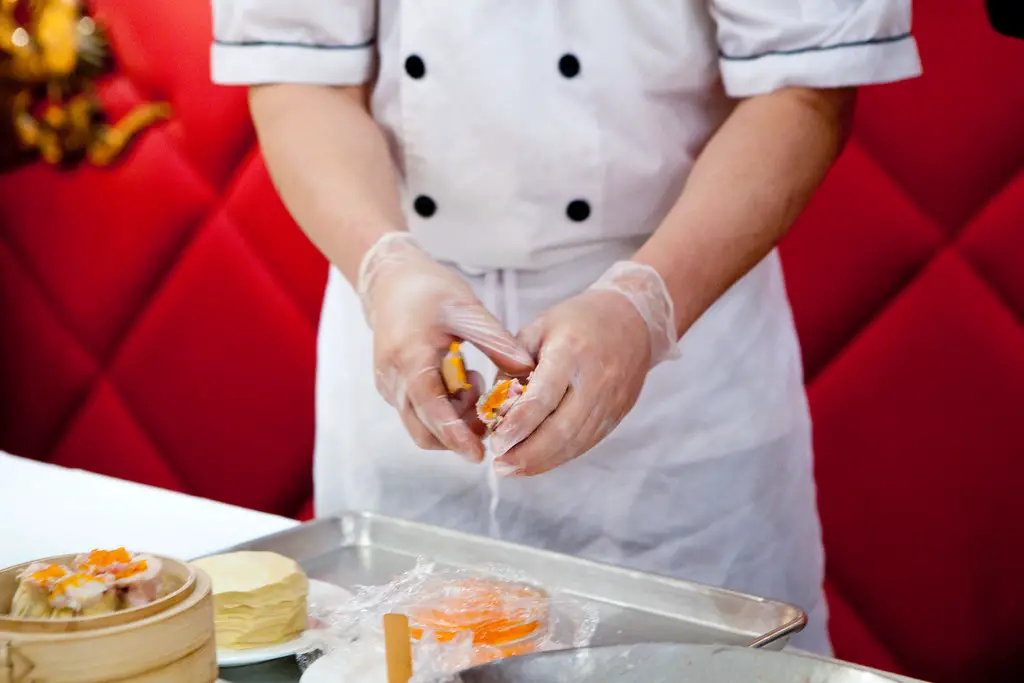Shu Mai (also known as Shumai or Siu Mai) is a beloved traditional dish in Chinese cuisine, famous for its delicate wrappers filled with juicy, flavorful fillings. Often served at dim sum restaurants, Shu Mai is a staple that has won the hearts of food enthusiasts worldwide with its unique texture and rich flavors. This article explores an authentic Chinese Shu Mai recipe that you can recreate at home, bringing a taste of China’s rich culinary heritage to your kitchen.
Ingredients:
Wrapper:
24 wonton wrappers
Filling:
300 grams ground pork (with some fat for juiciness)
100 grams shrimp, finely chopped
1 shiitake mushroom, finely diced
1 tablespoon soy sauce
1 teaspoon sesame oil
1 teaspoon Shaoxing wine (optional)
1/4 teaspoon white pepper
1 teaspoon sugar
2 tablespoons finely chopped green onion
1 tablespoon finely chopped ginger
1/4 cup water chestnuts, finely chopped (optional for crunch)
Instructions:
Prepare the Filling:
In a large bowl, mix together the ground pork, shrimp, and shiitake mushroom.
Add soy sauce, sesame oil, Shaoxing wine, white pepper, sugar, green onions, ginger, and water chestnuts. Mix until all ingredients are well incorporated. The mixture should be sticky and uniform.
Place a wonton wrapper in the palm of your hand. Spoon about 1 tablespoon of the filling into the center of the wrapper.
Gather the sides of the wrapper up around the filling, gently squeezing to form a cup shape while leaving the top of the filling exposed. Ensure the wrapper adheres to the filling but doesn’t cover the top, allowing the filling to remain visible.
Tap the bottom of the Shu Mai on a flat surface so that it stands upright.
Cooking:
Prepare a steamer by bringing water to a boil. Line the steamer with cabbage leaves or parchment paper to prevent sticking.
Arrange the Shu Mai in the steamer, ensuring they do not touch each other to allow for even cooking.
Steam for about 8-10 minutes, or until the filling is thoroughly cooked and the wrappers are translucent.
Serving:
Serve hot, garnished with additional green onions or a light drizzle of soy sauce and sesame oil.
Shu Mai can be enjoyed as is or with a side of chili sauce or sweet soy sauce for dipping.
Tips for Perfect Shu Mai:
Consistency of Filling: Make sure the filling is moist but not watery. The balance of ingredients should be such that the filling binds well but retains moisture to ensure juiciness after steaming.
Wrapper Placement: Be gentle when forming the Shu Mai to keep the wrapper intact and the filling secure.
Steaming: Don’t overcrowd your steamer. Steam in batches if necessary to ensure all dumplings cook evenly.
Creating Shu Mai at home can be a delightful experience, offering a glimpse into the intricate world of Chinese dim sum. This recipe not only promises delicious results but also an engaging culinary project that can be shared with family and friends. Enjoy the process and the delicious bites of your homemade Shu Mai!
Exploring Variations and Regional Differences
Shu Mai, like many traditional dishes, varies slightly from region to region. For instance, the Cantonese version is the most globally recognized and often includes primarily pork and shrimp. However, in other parts of China, such as Shanghai, you might find Shu Mai filled with glutinous rice and mixed meats, showcasing local tastes and ingredients.
Regional Variations to Try:
Shanghai Shu Mai: Incorporate glutinous rice into the filling for a heartier texture. Season with soy sauce and local spices for a distinctive regional flavor.
Japanese Shumai (Shiromai): This version is lighter, often using fish paste combined with pork for a softer texture. It’s typically topped with a vibrant green pea.
Vietnamese Siu Mai: Adapted from Chinese immigrants, this version can include quail eggs in the center, adding richness and a unique presentation to each bite.
These regional variations can provide an exciting twist on the traditional recipe and offer an opportunity to explore the diversity within Asian dumplings.
Nutritional Information
Shu Mai is not only delicious but also offers nutritional benefits when consumed in moderation as part of a balanced diet. Here’s a brief look at its nutritional aspects:
Proteins: The primary ingredients of pork and shrimp make Shu Mai a good source of protein, which is essential for muscle repair and growth.
Carbohydrates: The wonton wrappers provide a moderate amount of carbohydrates, offering energy.
Fats: The inclusion of pork adds some fat, which should be consumed in moderation.
However, these fats can be part of a healthy diet, especially if you balance them with plenty of vegetables and lean protein sources.
Cooking Tips for Beginners
If you’re new to making Shu Mai or dim sum in general, here are a few tips that can help ensure success:
Practice Makes Perfect: The assembly of Shu Mai might require some practice to perfect the technique of wrapping. Don’t be discouraged if your first few attempts aren’t perfect.
Preparation: Prepare all your ingredients before you start assembling. This mise en place approach ensures that the assembly process goes smoothly without having to pause and prepare an ingredient.
Cook in Batches: If using a smaller steamer, cook your Shu Mai in batches to avoid overcrowding. This ensures that each dumpling is evenly cooked.
Making Shu Mai at home is a delightful and rewarding endeavor that introduces you to the rich culinary traditions of China. Whether you stick to the traditional Cantonese style or explore other regional variations, each version has its own charm and flavors. Gather your ingredients, invite some friends or family over, and enjoy the process of creating (and eating) this wonderful dish. Happy cooking!


















